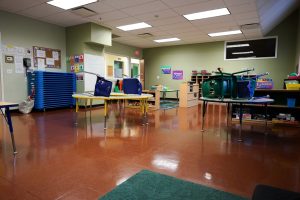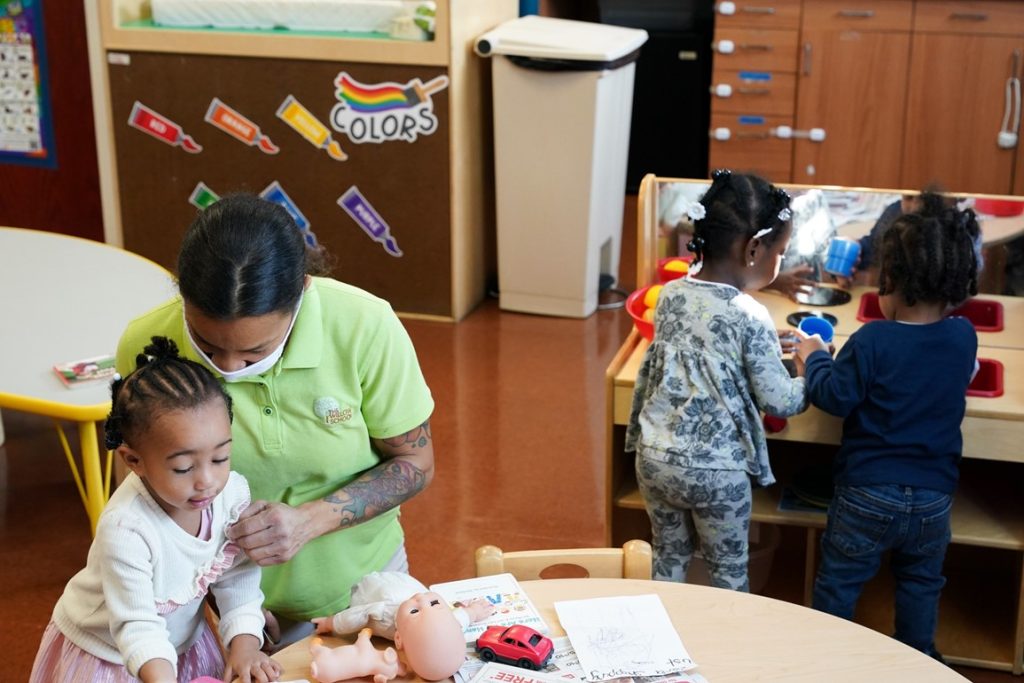Spotlight PA is an independent, nonpartisan newsroom powered by The Philadelphia Inquirer in partnership with PennLive/The Patriot-News, TribLIVE/Pittsburgh Tribune-Review, and WITF Public Media. Sign up for our free newsletters.
HARRISBURG — As a roughly $2 trillion social spending plan moves through Congress, transformational change could be on the horizon for child care in Pennsylvania and across the country. But now, an industry pivotal to the state’s economic recovery is facing severe staffing shortages.
Providers are struggling to attract and retain workers because of low wages, Spotlight PA recently reported, and the situation has ripple effects for the state’s economy, as parents shuffle their work schedules to deal with shorter hours and face tough decisions about how to care for their children without losing a paycheck.
Here are the figures that stand out, and what they show:
Closures
- About 6,800 licensed child care providers were operating in Pennsylvania as of late November.
- 1,000-plus licensed child care providers closed from March 2020 through October 2021, according to data from Pennsylvania’s Department of Human Services.
- 796 licensed child care providers opened during the same time period.
What it means: Advocates for child care providers say many more providers would have closed if not for hundreds of millions of dollars in federal relief. Still, the recovery is uneven. Some parts of the state lost more providers than others, and some types of programs — small ones, based in private homes — saw a larger net loss than larger child care centers.
Staffing shortages
- 6.1 million people were employed in nonfarm jobs in Pennsylvania in October 2019, according to jobs data from the U.S. Bureau of Labor Statistics.
- 5.8 million people were employed in nonfarm jobs in Pennsylvania in October 2021, according to preliminary jobs data.
- That’s a 5% decrease over two years.
- 48,100 people were employed in Pennsylvania child care jobs in October 2019, before the pandemic.
- 44,000 people were employed in child care jobs in October 2021, according to preliminary jobs data.
- That’s an 8.5% decrease over two years.
What it means: Child care providers say they can’t hire enough employees to meet the current demand, and they’ve had to close classrooms, reduce hours, and serve fewer children.
A survey released in September of more than 1,100 child care providers in Pennsylvania found there were nearly 26,000 children on waiting lists. More than 34,000 additional children could be served if providers were fully staffed.

High costs, low wages
- Pennsylvania’s median household income is $61,744, according to census data.
- $12,308 was the average annual price of sending an infant to a Pennsylvania child care center full-time in 2019, according to a survey by an advocacy group.
- $10,158 was the average annual price of sending a 4-year-old to a Pennsylvania child care center full-time in 2019, per the same analysis.
- $7,716 is the typical in-state tuition for most undergraduate students in Pennsylvania’s State System of Higher Education. That doesn’t include fees, housing plans, and other costs.
- $18.99 was the median hourly wage for all Pennsylvania occupations in 2019, according to the Center for the Study of Child Care Employment.
- $13.96 was the median hourly wage for Pennsylvania preschool teachers in 2019, according to the same group.
- $10.69 was the median hourly wage for Pennsylvania child care workers in 2019.
What it means: Child care providers operate on thin margins, which makes it difficult for them to raise wages and ease staffing shortages. At the same time, costs for parents are high. And even though low-income families are eligible for government subsidies, that assistance doesn’t cover the cost of care, child care advocates say. That perpetuates a broken business model.
Federal help
- Roughly $525 million in federal relief was earmarked for the Pennsylvania child care industry under legislation that passed in 2020.
- The American Rescue Plan Act, which passed in March under President Joe Biden, sets aside $1.2 billion more.
- Biden’s Build Back Better proposal, recently approved by the U.S. House, comes with a roughly $2 trillion price tag that, among other commitments, promises to lower child care costs for families and raise wages for workers.
What it means: Previous federal assistance helped programs stay in business as they dealt with shutdown orders, drops in enrollment, and new cleaning and safety requirements. Child care advocates expect providers will use some of the latest relief money to offer higher pay or better benefits for workers. But recruiting challenges could remain, and providers fear the money is only a temporary fix.
WHILE YOU’RE HERE… If you learned something from this story, pay it forward and become a member of Spotlight PA so someone else can in the future at spotlightpa.org/donate. Spotlight PA is funded by foundations and readers like you who are committed to accountability journalism that gets results.




